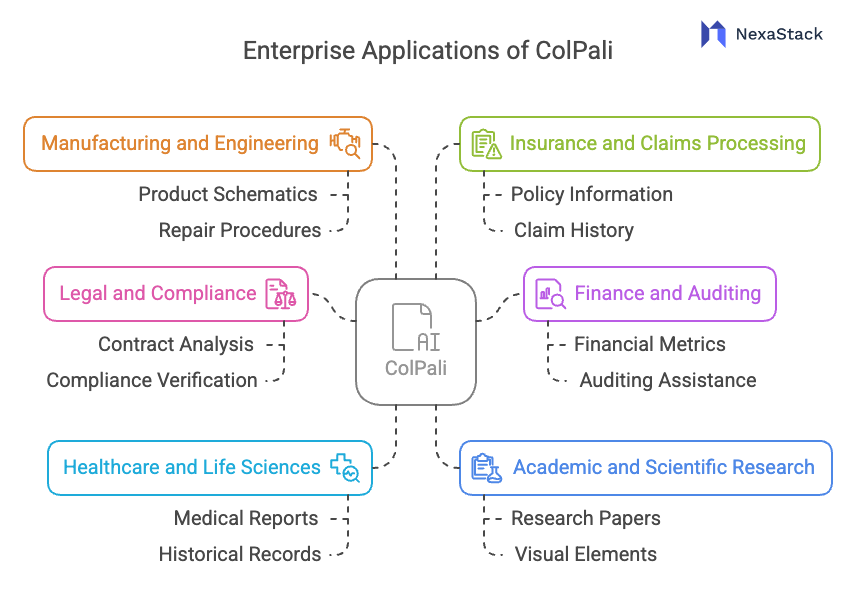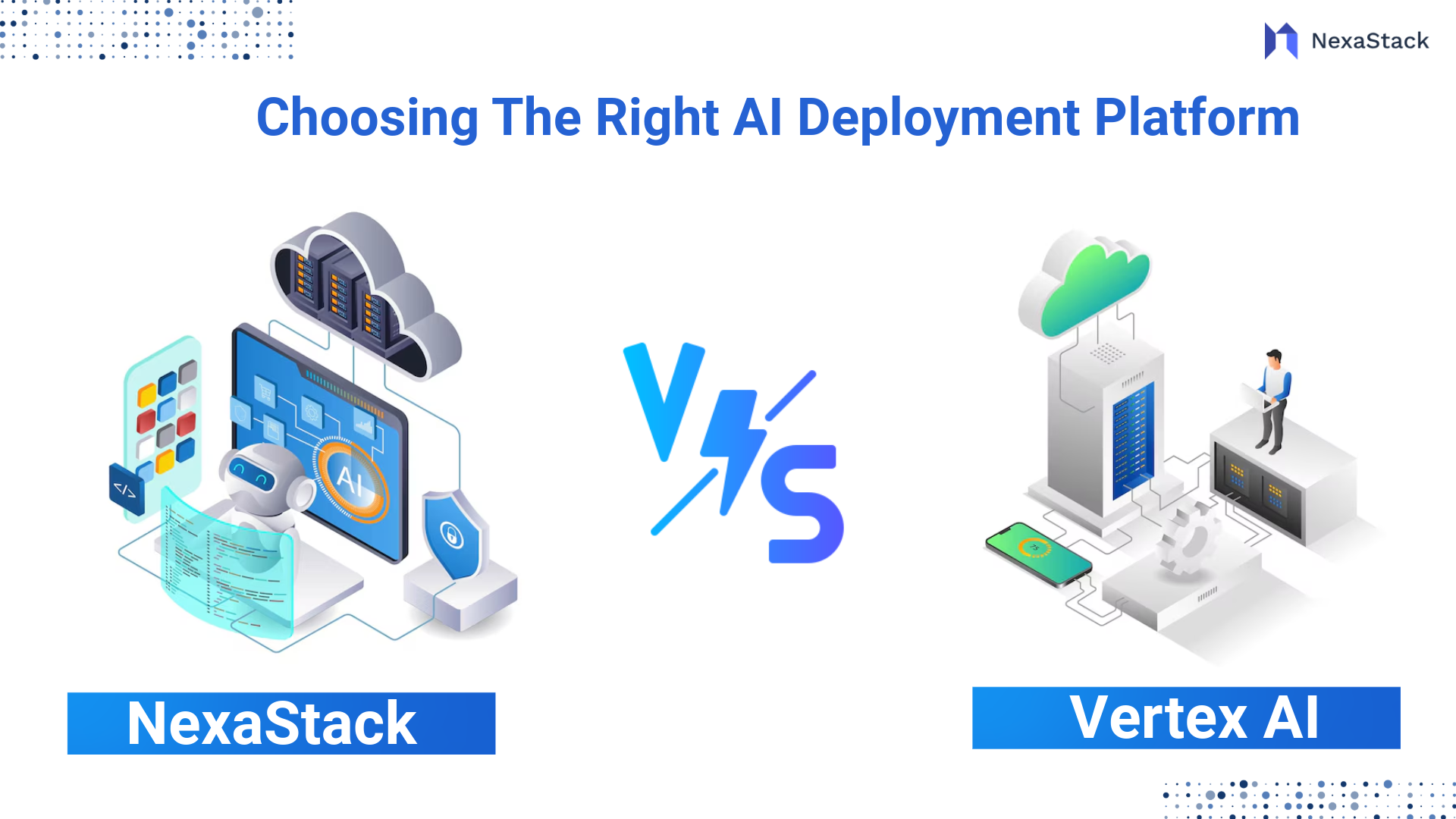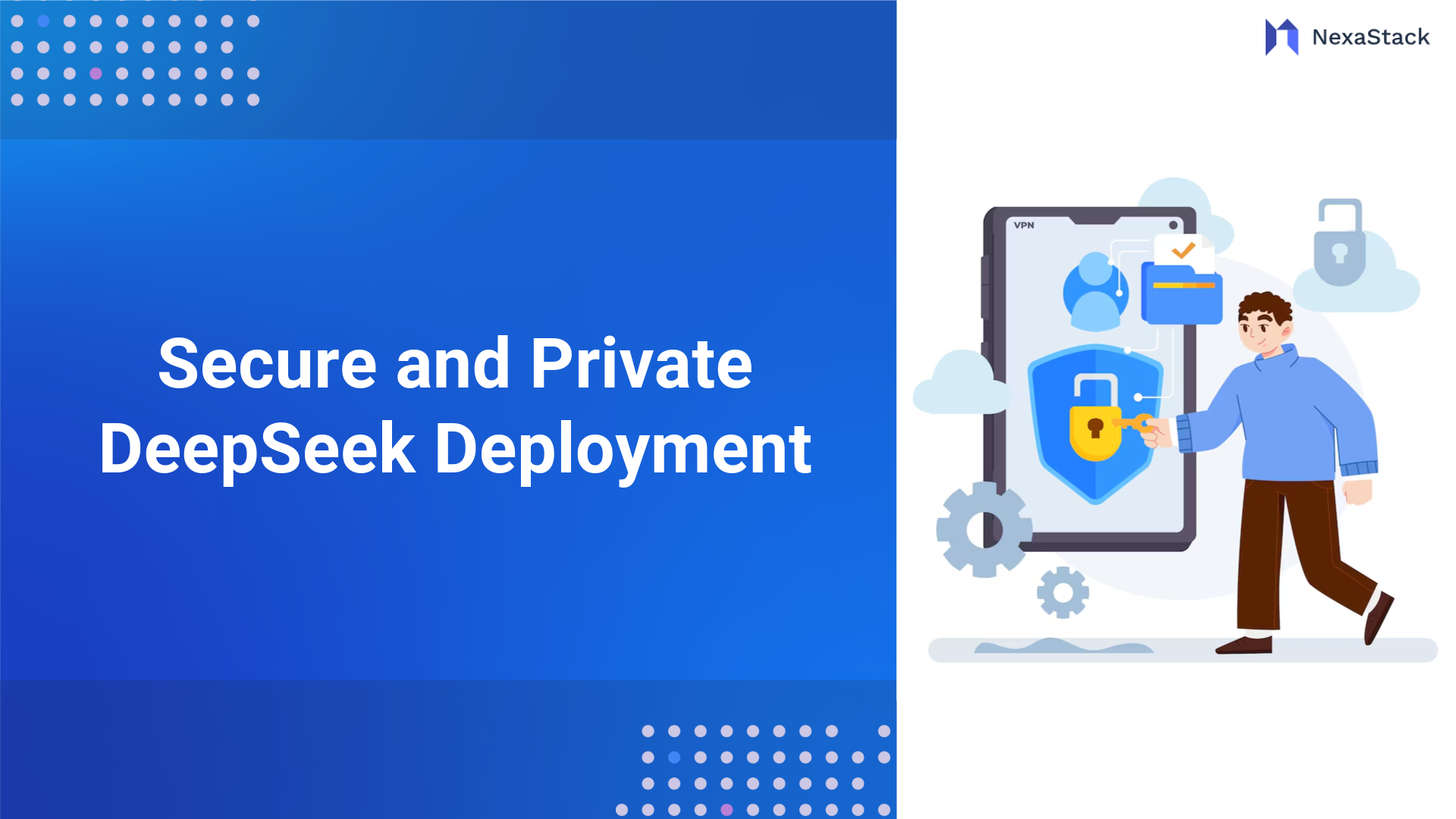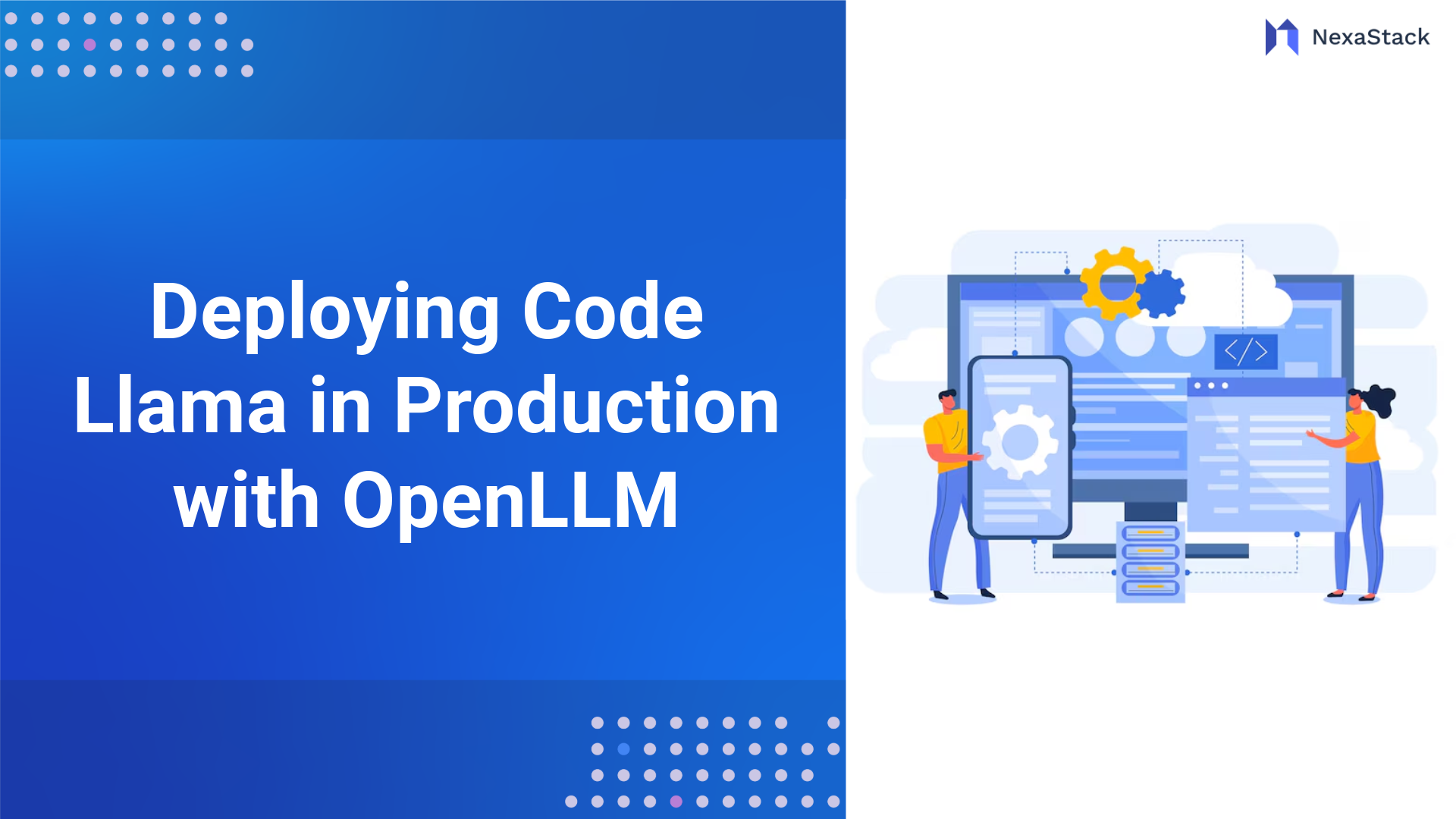Key Insights
ColPali leverages collaborative and personalized AI to automate workflows, enhance decision-making, and support dynamic task execution. Its enterprise applications include intelligent assistance, contextual support, and analytics across HR, IT, operations, and sales—boosting productivity and user engagement.

In the digital age, enterprises are accumulating vast archives of unstructured documents — from legal contracts and compliance forms to financial reports and scientific research. These documents are often stored in formats like PDFS or scanned images, rich in visual elements such as tables, charts, and multi-column layouts. Traditional document retrieval systems, which rely on optical character recognition (OCR) and text-based search, struggle to accurately interpret these visually complex files.
ColPali, or Contextualised Late Interaction over PaliGemma, offers a transformative solution. By combining computer vision and natural language processing, ColPali enables enterprises to retrieve highly relevant content directly from document images without any OCR or structural parsing. It introduces a vision-language-first approach to enterprise document intelligence.
What is ColPali?
ColPali is a state-of-the-art vision-language document retrieval model built on the PaliGemma-3B architecture. It integrates a Siglip vision encoder with a Gemma-2B language model. Like the Colbert framework, it uses contextualised late interaction to match natural language queries with content inside visual documents.
 Figure 1: ColPali Overview
Figure 1: ColPali OverviewKey Features:
-
Image-first approach: Treats each document page as an image, preserving visual cues.
-
Patch-based embedding: Processes document images into multiple visual tokens.
-
Token-level interaction: Compares user queries with document content at a granular level.
-
No OCR dependency: Bypasses traditional text extraction and layout modelling.
How ColPali Works: A Technical Deep Dive
Image Input and Vision Encoding
-
Document pages are converted into image format and passed through SigLIP, a high-performing vision encoder.
-
The image is divided into grid-like patches (e.g., 14×14 or 16×16), each producing a visual embedding.
Projection and Compression
-
Embeddings are projected into a lower-dimensional space (e.g., 128 dimensions) to optimise storage and retrieval time.
Query Embedding via Gemma
-
User queries, typically written in natural language, are tokenised and embedded using Gemma-2 B.
-
Each token is turned into a vector representation, preserving context.
Contextualised Late Interaction
-
Using Colbert-style late interaction, every query token computes similarly to all image patch vectors from documents.
-
The maximum similarity across all patches is calculated for each query token and aggregated into a final score.
Scoring and Ranking
-
Documents are ranked based on relevance scores, ensuring the most contextually aligned content is retrieved first.
Enterprise Applications of ColPali
ColPali has wide-ranging applicability across sectors where document complexity, visual structure, and precision are critical.
 Figure 2: Enterprise Application of Colpali
Figure 2: Enterprise Application of Colpali1. Legal and Compliance
-
Extract specific clauses or precedents from contracts, case law, or regulatory documents.
-
Identify terms and obligations from multi-column layouts and scanned images.
-
Enable compliance officers to verify document content without reading full texts.
2. Finance and Auditing
-
Retrieve key metrics (e.g., EBITDA, ROI) from financial statements embedded in PDFS.
-
Assist auditors in comparing figures across multiple documents from different periods or vendors.
-
Understand financial narratives through accompanying charts and footnotes.
3. Healthcare and Life Sciences
-
Search medical reports, discharge summaries, or pathology visuals for specific terminology or data.
-
Useful for hospitals digitising legacy paper records that retain handwritten annotations or diagrams.
-
Enhance diagnosis workflows by finding similar historical patient records quickly.
4. Academic and Scientific Research
-
Identify relevant charts, experimental results, or references from thousands of research papers.
-
Locate visual elements like formulas or figures critical for technical research validation.
5. Manufacturing and Engineering
-
Enable on-field technicians to locate product schematics, repair procedures, or calibration guidelines from scanned manuals.
-
Reduce downtime by empowering engineers to find specific procedural content through voice or text queries.
6. Insurance and Claims Processing
-
Extract policy information, claim history, and visual evidence from forms and attachments.
-
Speed up claim approvals by automating the understanding of complex, structured submissions.
Benefits of ColPali for Enterprises
| Benefit | Description |
|---|---|
| Elimination of Preprocessing | No need for OCR, text extraction, or layout parsing, reducing engineering overhead. |
| High-Accuracy Multimodal Retrieval | Effectively processes complex layouts with tables, figures, diagrams, and annotations. |
| Fine-Grained Query Matching | Token-level interaction ensures semantic precision and context-rich search results. |
| Enhanced User Experience | Provides more relevant, visually aligned document results for knowledge workers. |
| Scalable Architecture | Supports large-scale deployment across hundreds of thousands of documents. |
| Domain Flexibility | Works across legal, finance, healthcare, education, and manufacturing industries. |
| No Dependence on Layout Consistency | Performs well even with varied formats, templates, or document scan qualities. |
| Interpretability Tools | Highlights document regions contributing to search results, aiding transparency. |
| Cross-Functional Accessibility | Can serve multiple user roles — from C-level executives to operational analysts. |
| Secure by Design | Can be deployed on-premise or in secure cloud environments, ensuring data privacy and compliance. |
Key Challenges in Deploying Vision-Language Retrieval
Despite its advantages, deploying ColPali across enterprise systems brings its own set of technical and operational hurdles:-
| Challenge | Description |
|---|---|
| High Computational Overhead | Vision encoders and large-scale embeddings can be memory- and GPU-intensive. |
| Latency in Large Indexes | Searching millions of visual documents can lead to response delays without optimisation. |
| Noisy Inputs | Scanned documents with poor quality or handwriting can affect patch embeddings. |
| Limited Multilingual Understanding | Current models may underperform with non-English or mixed-language content unless fine-tuned. |
| Difficulty in Explaining Relevance | Understanding why a result was retrieved (at the token and patch level) can be opaque to users. |
| Fine-Tuning Requirements | Domain-specific use may require training on private document sets, requiring annotated data. |
Future Trends and Roadmap for ColPali
ColPali marks the beginning of a more significant shift toward multimodal, vision-first AI systems in enterprise information management. Over the next few years, we can expect the following developments:
1. Integration with Retrieval-Augmented Generation (RAG)
-
ColPali can be a backend retrieval engine for LLMS to generate responses grounded in visual documents.
-
Ideal for use cases like policy Q&A, legal reasoning, or document summarisation.
2. Lightweight and Distilled Models
-
Development of compressed versions of ColPali for deployment on mobile devices, AR glasses, and low-resource edge environments.
3. Multilingual and Cross-Script Retrieval
-
Support for multi-language documents and culturally diverse content, including vertical scripts, scanned handwriting, and symbols.
4. Semantic Re-ranking and Personalisation
-
Embeddings can be adapted for user intent, job role, or department, offering personalised search results across large enterprises.
5. Real-time Visual QA Systems
-
ColPali could evolve into visual Q&A agents where users instantly ask questions about scanned documents and get highlighted responses.
6. Federated and Private Deployment Models
-
Organisations can deploy ColPali within secure environments, enabling privacy-first retrieval across sensitive legal, healthcare, or financial datasets.
7. Enhanced Interpretability Layers
-
Upcoming versions will include interactive tools to visualise which parts of a document were most relevant to a given query, enhancing trust and compliance.
Why ColPali is a Strategic Investment for Enterprises
ColPali represents more than a technological leap — it signifies a strategic transformation in how enterprises access their institutional knowledge. By removing the limitations of OCR and keyword-only systems, ColPali unlocks new levels of document intelligence and operational efficiency.
Strategic Outcomes:
-
Increased Analyst Productivity: Professionals spend less time finding information and more time analysing it.
-
Accelerated Decision-Making: Decision-makers get instant access to relevant insights buried in documents.
-
Reduced Compliance Risk: Retrieval capabilities help ensure nothing important is missed in regulatory reviews.
-
Cost Efficiency: Less manual tagging, preprocessing, or domain-specific tuning required.
-
Enterprise Knowledge Activation: Decades of legacy documents can now be part of the active intelligence ecosystem.
Conclusion
ColPali exemplifies the next frontier of enterprise AI — one where vision-language understanding powers document intelligence in a contextually rich, scalable, and remarkably efficient way. By treating documents as visual artefacts rather than just text containers, ColPali can unlock insights and improve decision-making across sectors.
From legal and finance to healthcare and manufacturing, ColPali positions itself as a cornerstone of enterprise knowledge transformation, enabling businesses to see what they’ve been missing.
Next Steps with ColPali
Talk to our experts about implementing compound AI system, How Industries and different departments use Agentic Workflows and Decision Intelligence to Become Decision Centric. Utilizes AI to automate and optimize IT support and operations, improving efficiency and responsiveness.


